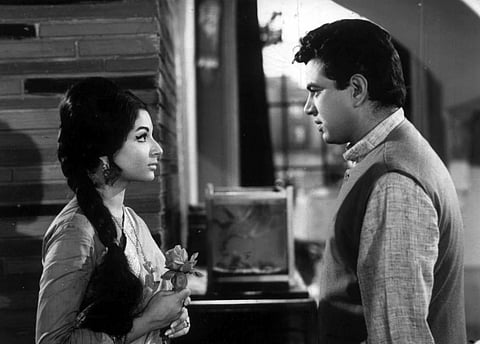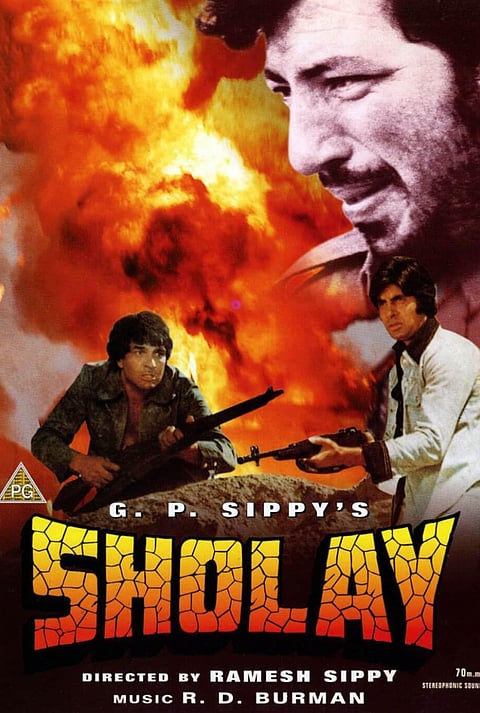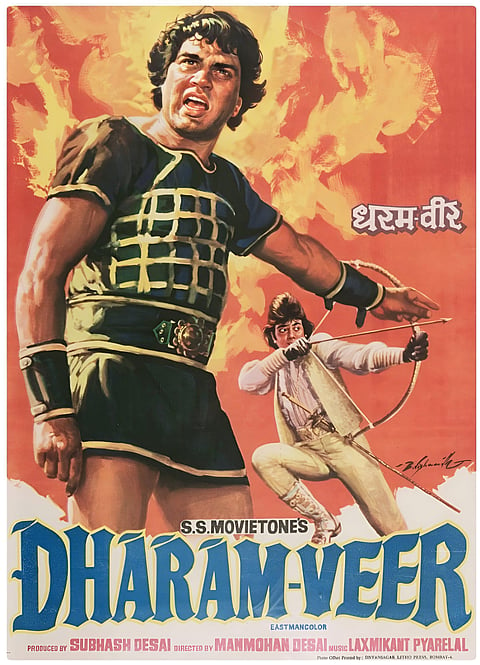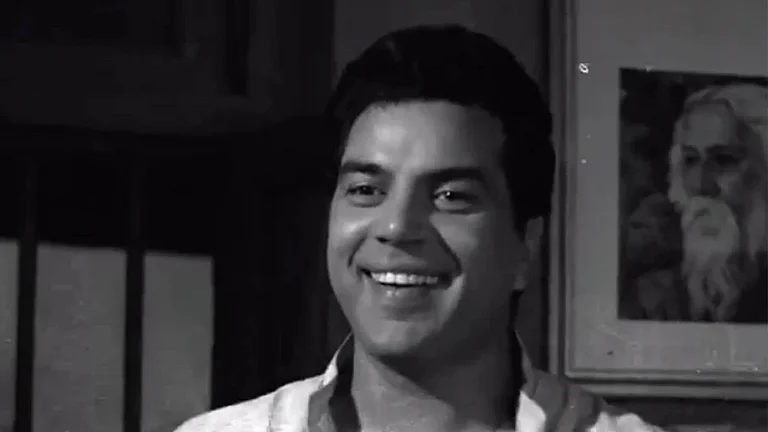Dharmendra being admitted in the Breach Candy hospital for serious health concerns has worried everyone in the industry and beyond.
Amidst speculations about his health, his family has asked for privacy and prayers.
Here’s a look back at twelve performances that shaped the enduring legend of one of Hindi cinema’s most memorable heroes.
Evergreen Dharmendra: Twelve Roles That Defined The He-Man Of Hindi Cinema
Few stars have lived as many lives on screen as Dharmendra—the lover, the fighter, the poet, the patriot. As reports of his critical health stir both grief and nostalgia, his filmography stands untouched in its emotional range and timeless appeal.
Recent reports of Dharmendra’s declining health and critical condition have sent waves of concern through the film industry and among generations of admirers. Though his family has appealed for privacy and urged restraint against speculation, it is known that the veteran actor has been struggling with health complications for some time. Yet amid the uncertainty, what remains unshaken is his monumental legacy—a body of work that continues to shape the very vocabulary of Hindi cinema.
Across six prolific decades, Dharmendra personified love, courage, humour, and heartbreak with effortless fluidity. Below is a look at twelve of Dharmendra’s most memorable performances, listed not by preference, but chronologically—each marking a milestone in his extraordinary journey through the heart of Indian cinema.

In Haqeeqat, Dharmendra portrays a soldier caught between love and the devastating futility of war. His understated performance reflects the vulnerability and pride of a man who bears his nation’s tragedy in silence. Amid Chetan Anand’s haunting realism, Dharmendra’s sincerity and emotional restraint stand out, turning Haqeeqat into not just a war film, but a deeply human elegy of sacrifice and loss.

A vibrant college romance where love, friendship, and concealed emotions unravel amid youthful idealism. Dharmendra portrays Ravi, a warm, ambitious young man whose sincerity defines the film’s romantic spirit. His chemistry with Asha Parekh radiates effortlessly with playful grace. The film remains memorable for its melodic buoyancy and for how Dharmendra captured that boyish earnestness that would soon make him Hindi cinema’s most adored romantic hero.

Dharmendra’s portrayal of Ashok—a quiet, introspective writer—remains one of his most soulful. His sensitivity illuminates Hrishikesh Mukherjee’s world of emotional repression and delicate tenderness alongside the brilliant Sharmila Tagore. Through still glances and soft-spoken grace, Dharmendra captures the essence of empathy. Anupama revealed his poetic side—a man who could express longing not through dialogue, but through silences that spoke volumes.

Here, Dharmendra steps into the role of an Indian spy with effortless suavity and intensity. As an agent confronting global intrigue, he infuses the character with quiet confidence and patriotic fire. His charisma turned Ankhen into one of Bollywood’s earliest and finest espionage thrillers. The film proves that Dharmendra wasn’t just the quintessential romantic hero — he was also India’s original action star.

As Ajit, a small-time thief seeking redemption, Dharmendra delivers one of his most compelling performances. His transformation from reluctant drifter to village saviour gives the film emotional weight. Opposite Vinod Khanna’s menacing villain, Dharmendra’s sincerity and courage stand out. Mera Gaon Mera Desh laid the foundation for the heroic everyman he would later perfect in Sholay.

Twin brothers separated by destiny — one royal, one outlaw — reunite to reclaim justice and identity. In a (problematic) double role as the twins, Dharmendra balances princely poise with earthy bravado. The contrast between the refined Gora and the rugged Kala displays his remarkable range. With its vibrant action, emotional undercurrent, and Dharmendra’s magnetic dual portrayal, the film stands as a testament to his ability to embody both heroism and humanity with seamless conviction.

Dharmendra’s portrayal of Shankar, one of three brothers separated in childhood, radiates nostalgia and emotional power. His rugged charm and sense of yearning make the story’s sentiment deeply affecting. He embodies the themes of memory, loss, and reunion with moving restraint. Yaadon Ki Baarat remains unforgettable for how Dharmendra’s quiet gravitas grounded a film otherwise bursting with action, music, and melodrama.

Dharmendra’s Jugnu blends charm with righteous mischief—a secret agent disguised as a circus performer, battling corruption with wit and courage. His performance sparkles with confidence and emotional agility. Whether in action scenes or tender moments, Dharmendra makes Jugnu an entertainer with heart. The film reaffirmed his reputation as a hero who could be both light-hearted and larger than life.

Two small-time criminals are hired by a retired cop to capture a ruthless dacoit, forging friendship and legend along the way. As Veeru, Dharmendra creates an immortal archetype—the mischievous, yet deeply loyal outlaw with a heart of gold. His comic brilliance, especially in the iconic water-tank scene, and his effortless camaraderie with Amitabh Bachchan lends Sholay its warmth. Beneath the laughter and swagger lie vulnerability and courage, making Veeru one of the most human heroes in Indian cinema’s most celebrated epic.

As Anupam Verma, a man drawn into a web of mystery and deception, Dharmendra brings charm and sophistication to Dream Girl. His chemistry with Hema Malini shimmer with warmth and wit. Though the film’s tone leans toward the fantastical, Dharmendra’s grounded performance lends it emotional pulse, making this romantic thriller one of their most stylish and spirited collaborations.

In Dharam Veer, Dharmendra epitomises swashbuckling nobility—a valiant prince with a generous heart. His playful chemistry with Jeetendra and his effortless athleticism give the film its larger-than-life energy. Balancing humour, heroism, and regal charm, Dharmendra turns the fantasy adventure into a joyous celebration of friendship, loyalty, and the pure charisma that defined his stardom.

As the slave-warrior Yakut, Dharmendra expresses restrained passion and dignity. His portrayal of devotion and doomed love opposite Hema Malini’s regal Razia add rare depth to the film’s grandeur. Beneath the historical spectacle lies a story of faith, loyalty, and forbidden tenderness—emotions Dharmendra embodies with aching sincerity. His Yakut remains one of Hindi cinema’s most quietly tragic lovers.

As Thakur Arjun Singh, Dharmendra lends gravitas and moral weight to a story steeped in politics and betrayal. His commanding presence anchors the film’s emotional foundation, portraying a man torn between duty, pride, and justice. Batwara highlights Dharmendra’s late-career strength—the seasoned patriarch whose authority and compassion commanded respect, proving his screen magnetism never dimmed with time.

